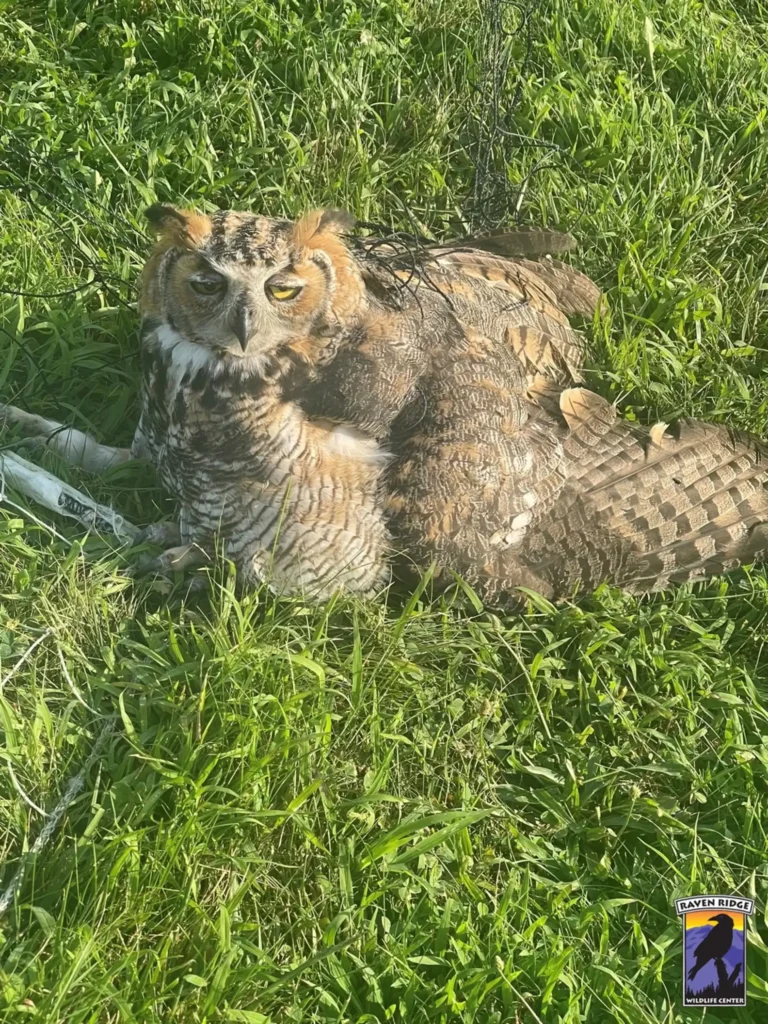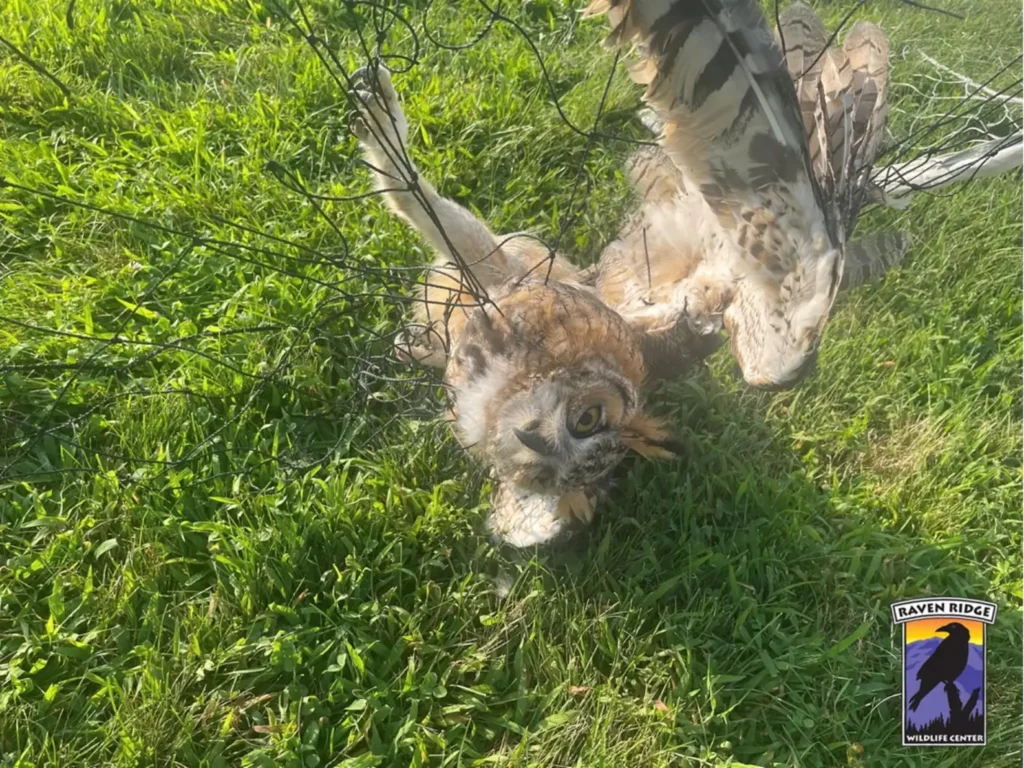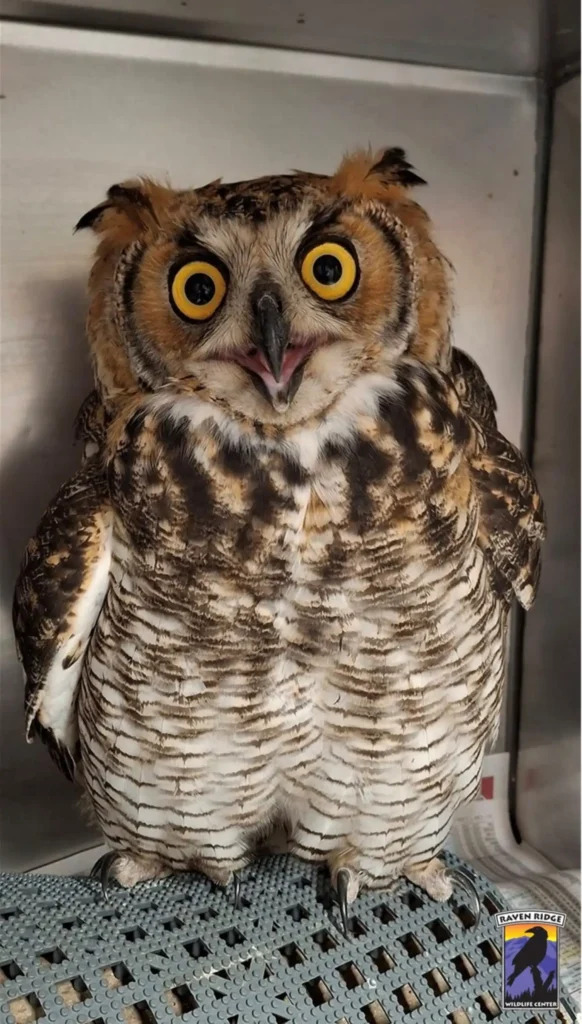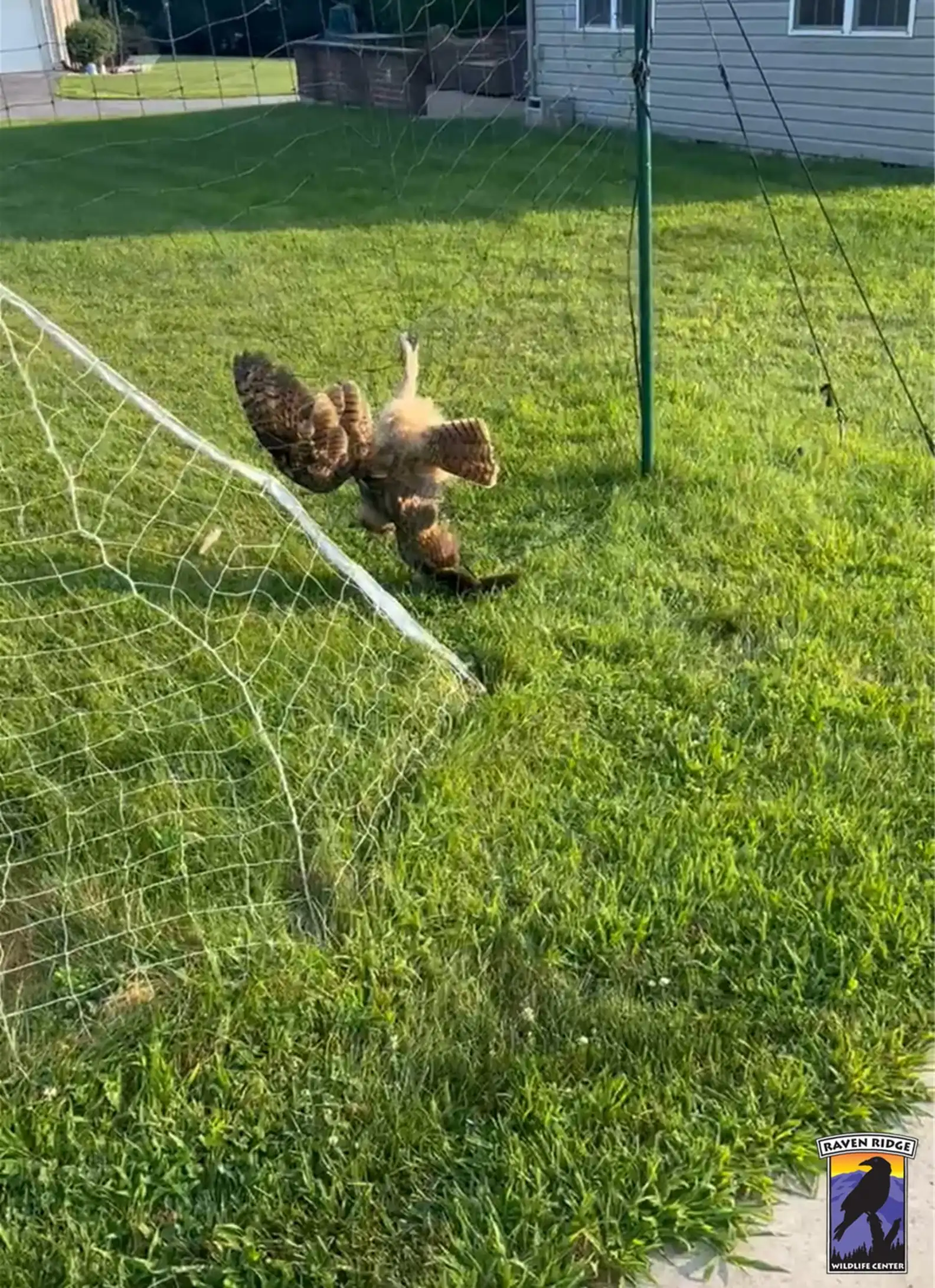“This scenario occurs far too frequently during the summer months …” 😰
On a quiet July morning near Lancaster, Pennsylvania, a woman stepped into her backyard and was met with a shocking scene — an owl hanging upside down, motionless and tangled in a volleyball net.
Though the bird appeared lifeless at first, he was still breathing, barely moving and clearly in distress. Unsure how to help, the woman called out for assistance — and thankfully, a nearby neighbor and his son knew what to do.

According to a post by Raven Ridge Wildlife Center (RRWC), the pair responded quickly. With care and precision, they freed the owl from the netting, doing their best not to cause further harm, and gently placed him in a box for safety. They then contacted the Pennsylvania Game Commission, which in turn notified RRWC.
A transport volunteer from the wildlife center arrived shortly after and collected the exhausted bird, who, despite his ordeal, was found to be in fairly good physical shape.

“He was severely fatigued and worn out from struggling for hours, but miraculously had no broken bones and only minor injuries from the tight netting,” RRWC shared.
The incident highlights a broader issue. RRWC reports that entanglements like this are all too common during the summer, especially when sports nets are left outside and unattended.

“To help protect our wildlife, it’s vital to take down or properly store sports netting when it’s not in use,” RRWC urged. “A small act like this can make a big difference — saving animals from unnecessary harm and suffering.”
Owls, being nocturnal hunters, often fly into dark netting without seeing it. This particular owl likely became trapped during a nighttime flight. Had the net been removed or stored properly, the accident could have been prevented entirely.

Back at RRWC’s facility, the owl received rest, fluids, and medical care. In a matter of hours, his weary eyes became bright and alert, a hopeful sign of his recovery.
The owl will remain under the center’s care until he regains full strength. When he’s ready, the goal is to return him to the exact area he came from — his home in the wild.
“We’re eager to release him back to his territory where he belongs,” RRWC said. “Until then, we’ll continue to give him the care he needs — and keep spreading awareness about how small actions, like storing netting, can protect countless animals.”
As RRWC puts it, “By working together, we can ensure our wild neighbors stay safe and thrive where they’re meant to — in nature.”
